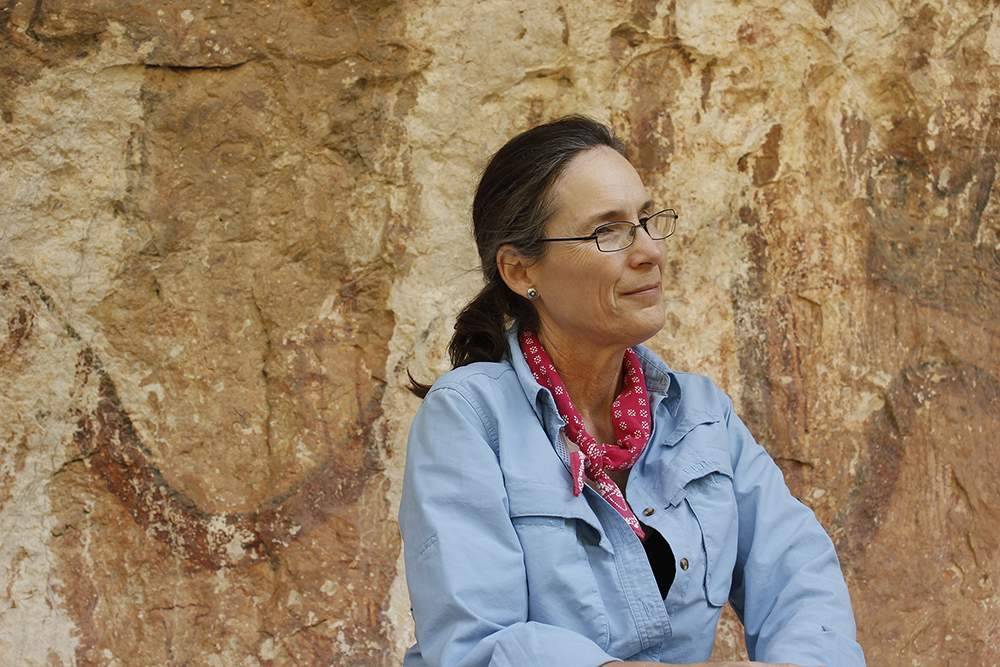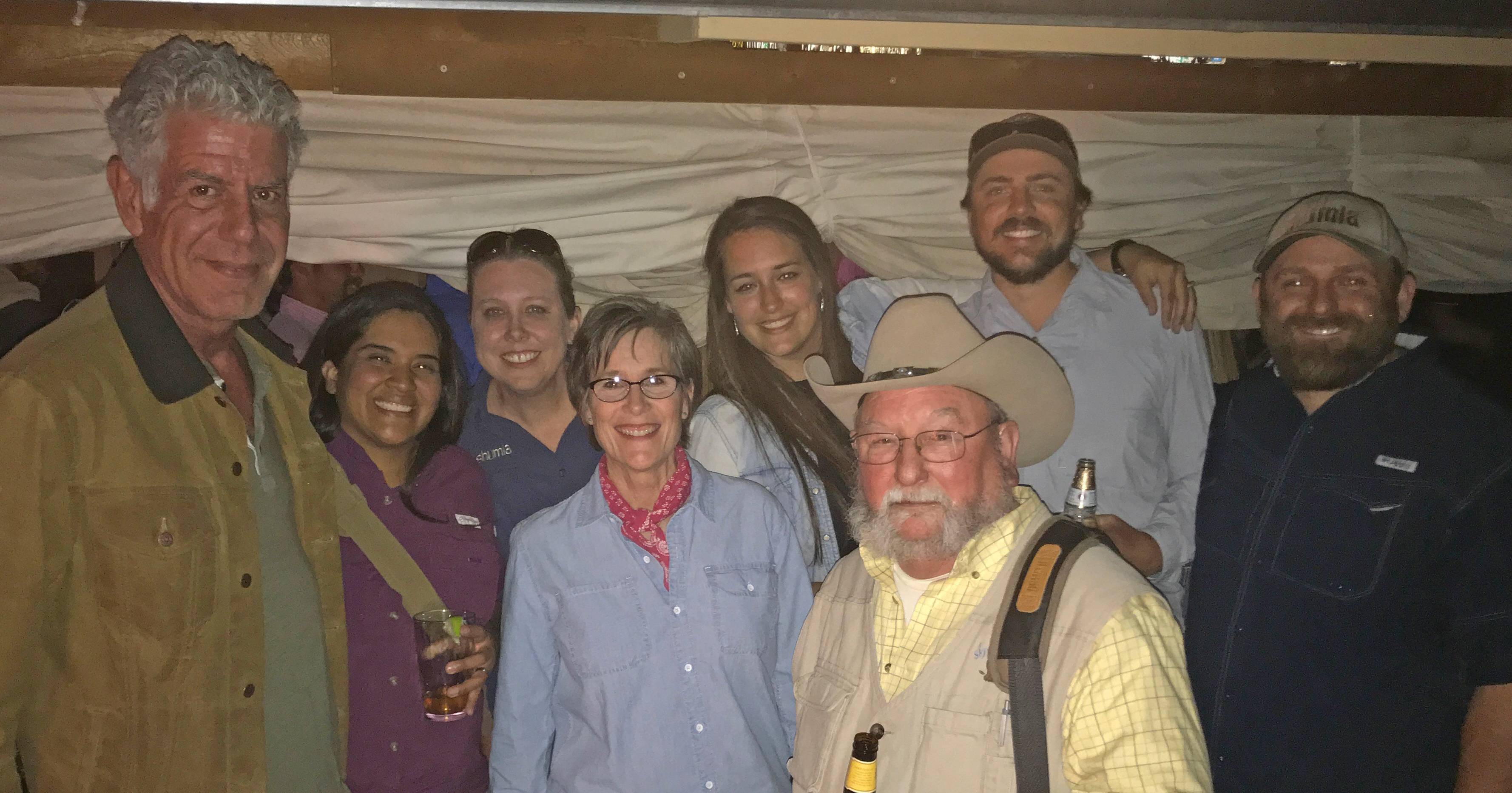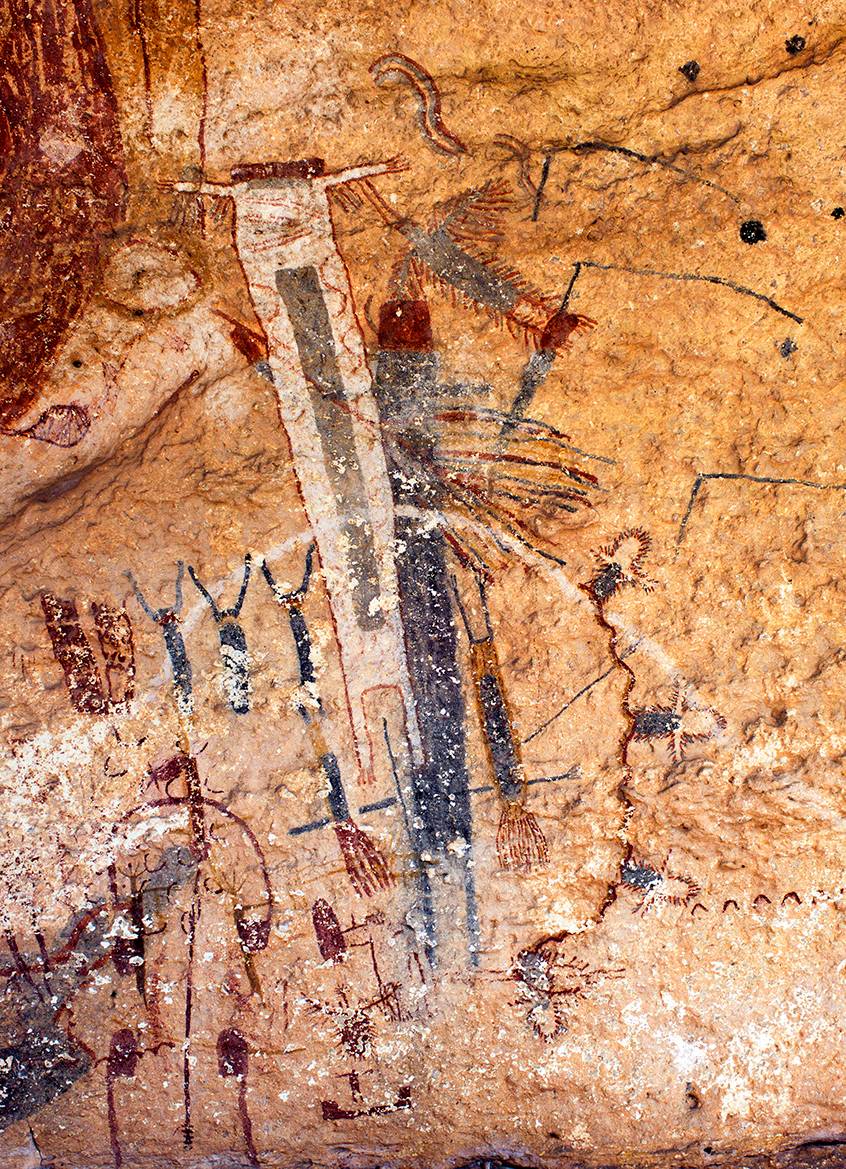Archaeology professor talks ancient rock art on the border in ‘Parts Unknown’
Julie Cooper | October 18, 2018


Texas State archaeology professor Dr. Carolyn Boyd remembers well when she got the call last February that landed her and her knowledge of rock art of the Lower Pecos Canyonlands in one of the final episodes of CNN’s “Anthony Bourdain: Parts Unknown.”
The episode titled, “Far West Texas” will air Sunday, Oct. 21. It was filmed in March 2018. Bourdain died in June in Paris.
“You know you don't answer the phone when it's a number you don't recognize. I started not to answer it and then I thought, ‘that's New York, it might be somebody important that I need to contact,’” she says.
It was producer Gillian Brown, who along with her director husband, Morgan Fallon, helped to bring “Parts Unknown” to television. Brown had read about Boyd’s work along the Texas Border, maybe in an archaeology magazine, or just as likely in the book Texas Blood (Random House, 2017) by Roger Hodge.
“She said that for this particular program they were wanting to capture the people of the past and the present of the border,” Boyd recalls. “Essentially, put a face to the U.S. and Mexico border.
“That included talking to me and my colleagues at Shumla about the prehistoric peoples that lived in that region thousands of years ago. The decision was made that sure enough, we would go and meet — go to some of the rock art sites and do some filming.”
The nonprofit Shumla Archaeological Research and Education Center was founded by Boyd some 20 years ago and is based in Comstock. Shumla is a leader in rock art research and education. They document, collect data, and work to preserve images.
Last year, Boyd accepted the position as the Shumla Endowed Research Professor at Texas State. She has written several books about the rock art of the Lower Pecos Canyonlands. There are approximately 350 known sites of rock art on the U.S. side of the border.
What was hardest for Boyd as she prepared for “Parts Unknown” was having to keep the whole project secret. The producers asked her not to tell anyone what was going to happen. She did tell Dr. Beth Erhart, chair of the Department of Anthropology. “I said you’ve got to keep it quiet. They don’t want this to get out until the promos go out.”
Boyd journeyed to Comstock to set things up with Shumla. “I couldn’t tell them in advance about what was going on because you didn't want the word to get out and then all of a sudden everybody who wants to see Anthony Bourdain shows up at the local bar and grill.”
As it turns out, the sit-down interview with Bourdain and Boyd did take place at a bar in Alpine. They had asked the bar owner to keep it quiet. “Well the word got out, and before you know it that bar — that sleepy little hole in the wall — was covered up with people. It was just unbelievable,” she says. At the bar, Boyd and Bourdain were joined by author Hodge and Shumla colleague Elton Prewitt. “We got into some pretty heavy discussions, about the art, about the people, their belief systems and lifeways along that rugged environment. It was very focused, and he was very engaged,” she says of Bourdain.


The next day, they drove back to Comstock and went out the White Shaman mural site. Bourdain, who had more territory to cover, including Big Bend and the Rio Grande River, did not accompany the crew. Filming at the rock art site took about six hours.
“It's been really kind of a bittersweet surreal kind of a thing. It's a real honor to be a part of it. I believe very strongly in what they were trying to communicate through this in terms of putting a face on the people of the past and the people along the border. I think that's a very important thing to break down stereotypes that people have of border life.”
What does she hope will come out of this show?
“I think a lot of people who watch ‘Parts Unknown’ have no idea about the rock art of the Lower Pecos. That we have these incredible pictorial narratives that are thousands of years old in our own state. Even more exciting that we're actually beginning to decode those murals that are 4,000 years old,” Boyd says. “I think the show itself will present life on the border in a way that people have not necessarily been exposed to before. The incredible work ethic, the passion and love for the land, the importance of family, the recognition in some ways that there was no border.”
Share this article
For more information, contact University Communications:Jayme Blaschke, 512-245-2555 Sandy Pantlik, 512-245-2922 |